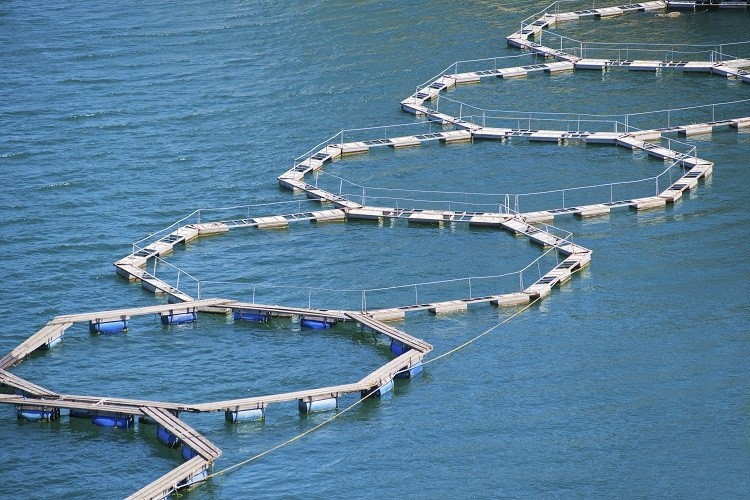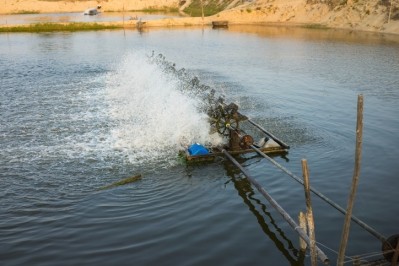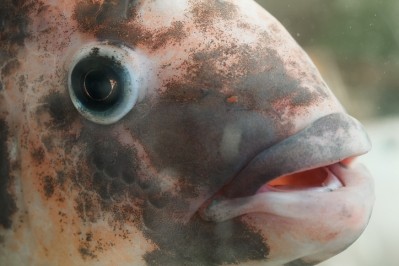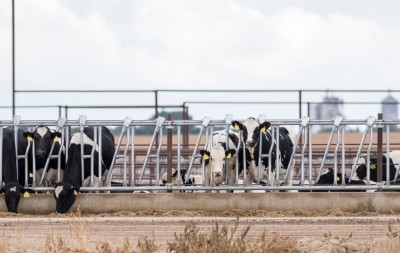Tilapia trial aimed at setting parameters for medicated feed

A team of researchers from the University of Campinas and Embrapa Environment in Brazil examined the amount of time it took for the medicated feed additive sulfamethazine (SMZ) to leave farmed tilapia.
The group published its work in the journal Chemosphere.
“The depletion of sulfamethazine (SMZ) was evaluated in Nile tilapia (Oreochromis niloticus) treated with medicated feed containing this drug,” the researchers said. “Considering the value of acceptable daily intake (ADI 0–0.05 mg/kg bw [body weight]), the risk that SMZ residues in tilapia muscle offers to the consumers was also calculated.”
The medicated feed additive was found to present a low risk for adverse effects in relation to consumers if a 10-day withdrawal period is used, the researchers said. The fish were considered to eliminate the additive quickly.
“Taking into consideration the ADI [acceptable daily intake] and maximum residue limit (MRL) values of SMZ, the SMZ residue in tilapia muscle, the drug's half-life and the calculated withdrawal period, the present study offers subsidies not only for the establishment of public policies with regard to the use of drugs currently not allowed by the legislation framework for fish farming, but also to fish producers for the proper handling to ensure safe fish fillets,” they said.
Why sulfamethazine in feed?
Farmed production of fish continues to expand and the restriction of disease outbreaks is an ongoing consideration for the development of the industry, the researchers said. The estimated annual loss arising from disease globally is several billion dollars.
Fish density and the lack of barriers separating a large number of farms are considered factors in creating non-hygienic conditions and promoting bacterial infections, they said. Overcrowding, water quality, poor nutrition, mismanagement and changing temperatures also are linked to stressful production conditions. Several aquaculture species have low survival rates based on bacterial disease.
“Fish farming systems are characterized by high population density and volume and heavy use of formulated rations containing antibiotics, antifungals and other chemotherapeutic products,” they said. “Despite the general use of antibiotics in fish farming, data about their proper use (type, dose, treatment period) in the treatment of diseases is needed, since the data available are limited and, generally, are originated from developed countries, while the majority of fish farming production occurs in developing countries, where there is a limited or no regulatory framework.”
The researchers said the presence of drug residue in animal products may be harmful to human health if residue levels are above maximum residue levels (MRL).
Sulfonamides (SAs) are widely used because they are inexpensive and efficient, they said.
Feed is the main route used to medicate adult fish as it is easy, cheap, reduces waste compared to medicating water and limits the amount of drug in the environment, they said. However, SAs in the environment have been linked to the development of bacteria resistant to antibiotics and some types of fish may bio-concentrate SMZ in muscle tissue.
“The proper use of SAs in animals intended to produce food for human consumption is necessary since its out-of-conformity use carries potential risks related to microbial resistance, which may affect not only the production system itself but also the human and environmental health,” they said.
In Brazil, only two antimicrobial products - florfenicol and oxytetracyclineare - regulated for use in aquaculture, the researchers said.
“It is suspected that veterinary drugs regulated for other species, such as cattle, poultry, pigs and even pets are being used in fish farming to prevent or treat fish-related diseases.
“This approach does not follow good veterinary or food safety practices since there is no guarantee that the fundamental prescriptions for proper use (doses, period of treatment and withdrawal period) are being fulfilled.
“This increases the possibility of antimicrobial residues in the edible tissue and the development of resistant bacteria.”
Methods and materials
In the study, juvenile tilapia were given one of one of two diets for a period of 11 days, the researchers said. The diets included a commercial control and that feed with added SMZ.
After the 11-day period, both groups of fish were returned to a commercial, non-medicated diet, they said. Sample fish from the previously medicated group were collected at 6, 12, 24, 48, 72, 144, 168 and 360 hours after the end of the medicated feeding to check for SMZ concentrations in the muscle.
The time needed for SMZ residue levels in the fish tissue to fall to the MRL of 100 μg/kg also was determined, they said.
Results
Presence of the antibiotic was not found in the commercial feed, or in muscle from the control group fish, the researchers said. The amount of SMZ found in the trial feed was 24.3mg/g, meaning fish received a dose of 422mg/lg of body weight (bw).
The acceptable daily intake (ADI) of SMZ for humans is 0-0.05 mg/kg of body weight, they said. “In the hypothesis of a person who weighs 70 kg, a maximum of 3.5 mg of the substance should be ingested daily to avoid suffering possible adverse effects from the drug,” they added.
The largest amount of residue found in the medicated fish was 1.6mg/kg, they said. “Considering as a worst case a daily consumption of 500 g of fish fillets, containing 1.6 mg/kg of SMZ, by a 70 kg person, it would represent a daily intake of 0.011 mg of the drug/kg bw. This amount is approximately 4.5 times lower than the ADI established,” they added.
However, the withdrawal period need to bring residue levels in line with the value set by the EU would be about 239.9h or about 10 days, they said. “The risk of unsafe consumption of tilapia fillets by humans, as a consequence of SMZ residues derived from fish treated with medicated feed, in the doses used in this study (422 mg/kg bw) or a lower dose, can be considered small if a withdrawal period of 10 days (260 °C-day) is observed,” they added.
Source: Chemosphere
DOI: doi.org/10.1016/j.chemosphere.2018.01.030
Title: Depletion study, withdrawal period calculation and bioaccumulation of sulfamethazine in tilapia (Oreochromis niloticus) treated with medicated feed
Authors: K Nunes, J Vallim, M Assalin, S Queiroz, L Paraíba, C Jonsson, F Reyes















